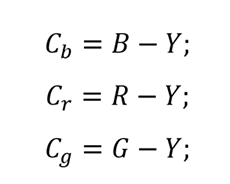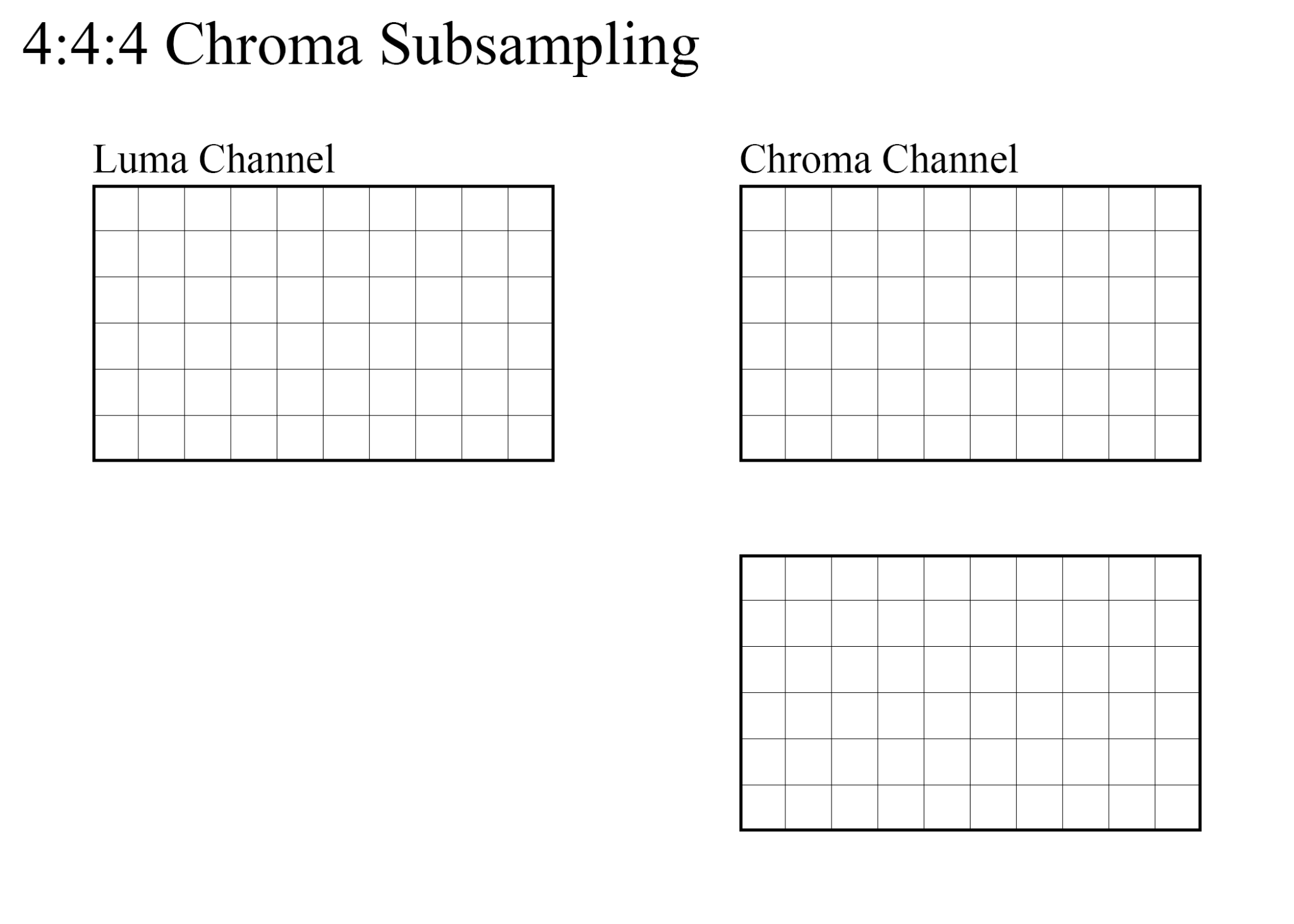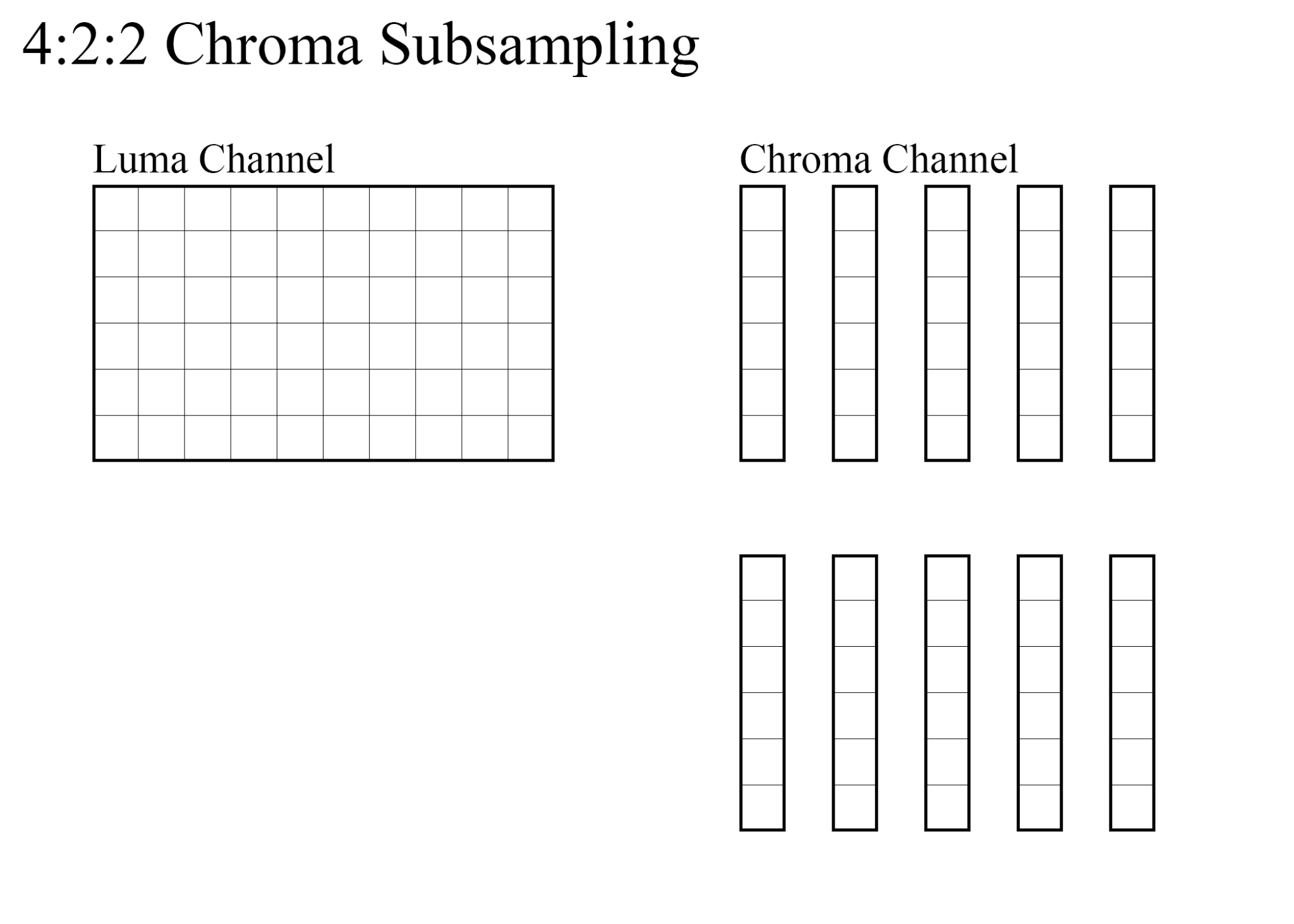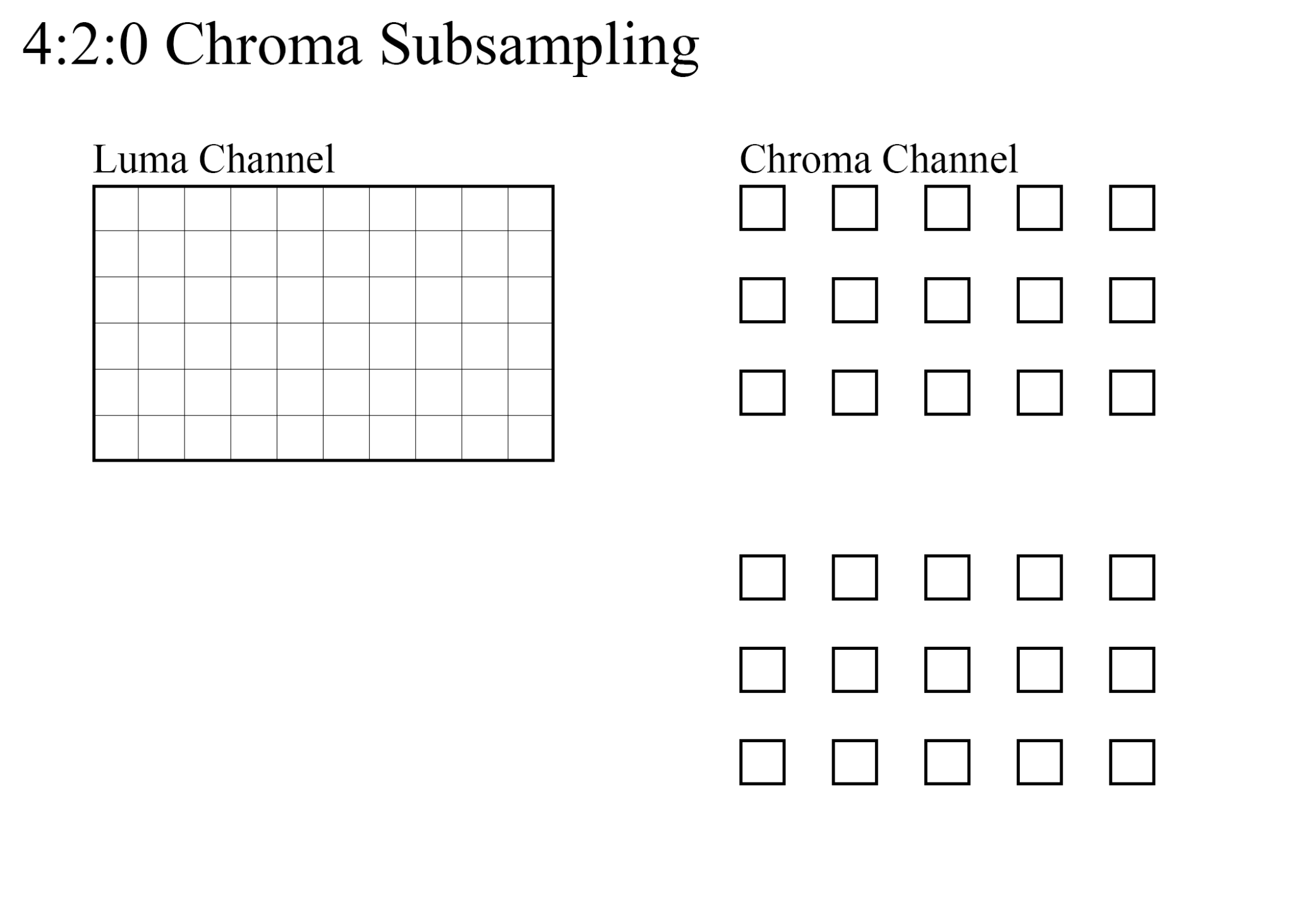Chroma format/chroma subsampling
Chroma format is a method to represent and store digital images. Two chroma formats can be distinguished: RGB and YUV.
RGB contains three color components: red (R), green (G), and blue (B). Different amounts of these components create a wide array of colors.
In The YUV format (also called YCbCr) one component is responsible for luma (brightness) and two for chroma (color). YUV components are easily deduced from RGB components using the formulas provided below:

where k are weighting factors;

A full description of a color image includes one luminance component Y and three chrominance components Cb, Cr, Cg. Since the number Cb + Cr + Cg is constant, therefore one color component can be derived on the basis of the other two and, therefore, it is enough to store only two color components. The resolution of the color channel in YUV can be reduced without visible damage to quality. This property of the YUV system is reliant on the ability of the human eye to be more susceptible to a change in brightness rather than color.
Chroma subsampling defines the number of pixels in the color channel relative to the luma channel.
- 4:4:4 – luma and chroma channels have the same resolution, which results in high image accuracy.

- 4:2:2 – chroma channel has the same height as luma channel and twice shorter width; it is a popular format for high-quality color video;

- 4:2:0 – chroma channel has half of the height and half of width of the luma channel resolution; it is usually used in digital TV, DVD discs and video conferencing;

- 4:0:0 – has no chroma channel at all, it is a monochrome image.